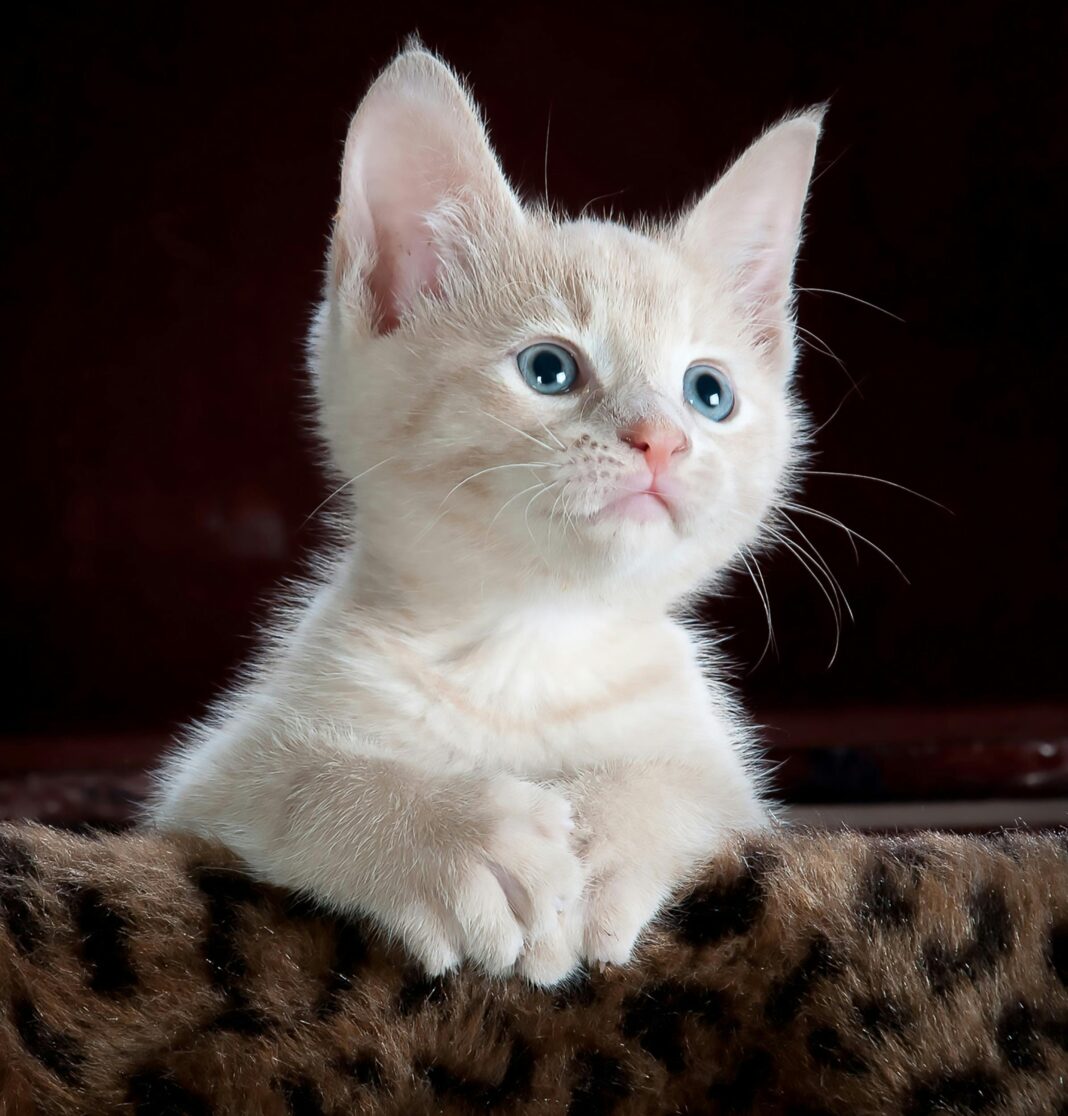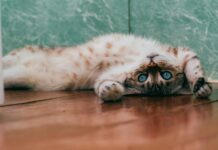Physicist Dr. Anxo Biasi of the Galician Institute for High Energy Physics believes he has discovered something almost as elusive to his discipline as quantum phenomena: the equation of cat motion. Or, more precisely, how cats behave in the presence of a human.
Erwin Schrödinger made two major contributions to physics – the wave equation and a quantum cat in superposition. Felis catus has been inextricably linked to advanced physics ever since (though some argue that the connection goes back much further, to our collective fascination with the nimble way cats always land on their feet).
It seemed that this connection might have reached its zenith with the awarding of the Ig Nobel Prize for the discovery that cats can be both liquid and solid. However, Biasi believes that there is still more to be done on the subject. “This article aims to make physics accessible to non-specialists by offering a pleasant example through which it is possible to understand several concepts of classical mechanics,” he wrote in a statement. “To this end, I have constructed an equation that models the behavior of a cat in the presence of a human, the former being considered as a point particle moving in a potential induced by the human.”
Although he sought help from friends familiar with feline behavior, the work is based primarily on observations of a single cat, Emme, who shares a home with Biasi. He begins with the hypothesis: “Cats behave as if they perceive a force around a human,” then identifies seven patterns in Emme’s movements that he describes.
However, the researcher presumptuously places the human at the center of the modeling, defining his location as x=0 and the cat’s position as x. If m is the mass of the cat and ϵ is the drag coefficient of the cat’s fatigue, Biasi starts with the basic formula:
md2x/dt2 = – dV(δ)cat(x)/dx – ϵdx/dt.
From there, he used his observations of Emmet’s models to add complicating factors to the formula, such as purring and nocturnal energy bursts.
Biasi says, “It started as a playful idea for April Fools’ Day […] But I soon realized that the equation I had created could be of great use to physics students.”
The cat’s purring provides an opportunity to demonstrate the physics of a self-reinforcing system, for example, with Biasi claiming, “It is hypothesized that when a cat is petted and starts purring, people tend to feel an impulse to continue petting it, thereby reinforcing the stability of the process.” Who knows how many people have been delayed from important tasks—perhaps even from major breakthroughs in physics—by the morally if not physically unshakeable pull of a purring cat on their lap?
Biasi believes that lap sitting and five other behaviors—including not answering calls, absent-mindedness, and head-banging—fall into the low-energy range. However, nocturnal bursts (also known as periods of frenetic random activity, or PFSA) involve a higher energy state. PFSA can only be modeled by introducing a random function, because, let’s face it, even a cat doesn’t know what’s going to happen. Biasi adds an extra term, σf(t), to account for this, treating the movements of an enlarged cat as a stochastic process, using the Euler-Maruyama method, which is also used to model Brownian motion.
There are a few things about the work that are worth noting, though.
For one thing, Biasi is listed as the sole author of the paper. Where’s Aimé? Even the acknowledgments read, “The author is grateful to his cat for being a source of inspiration,” which is a bit of an unfortunate throwback to the days when authors would thank their wives for their work without mentioning them by name.
More significantly, Biasi notes that his modeling is entirely classical, with the cat considered as “a point particle obeying Newtonian mechanics.” And given the established quantum behavior of cats, this seems a serious simplification, even in the unlikely event that a cat would obey anyone’s laws, including Newton’s. To be fair, Biasi acknowledges that his equations “are not universal, and some cats may exhibit a weaker version of some of them.” He also claims that his work can “reproduce characteristic cat behavior,” so that those who are able to understand his equations and have a cat to observe can judge their accuracy for themselves.
Illustrative Photo by Pixabay: https://www.pexels.com/photo/white-and-grey-kitten-on-brown-and-black-leopard-print-textile-45201/













 English
English French
French Spanish
Spanish German
German Dutch
Dutch Italian
Italian Danish
Danish Portuguese
Portuguese Greek
Greek Russian
Russian Swedish
Swedish Bulgarian
Bulgarian Hungarian
Hungarian Catalan
Catalan Ukrainian
Ukrainian Polish
Polish Basque
Basque Chinese (Simplified)
Chinese (Simplified) Japanese
Japanese Hebrew
Hebrew Arabic
Arabic Swahili
Swahili Amharic
Amharic Irish
Irish Afrikaans
Afrikaans Albanian
Albanian Armenian
Armenian Azerbaijani
Azerbaijani Belarusian
Belarusian Bengali
Bengali Bosnian
Bosnian Cebuano
Cebuano Chichewa
Chichewa Chinese (Traditional)
Chinese (Traditional) Corsican
Corsican Croatian
Croatian Czech
Czech Esperanto
Esperanto Estonian
Estonian Filipino
Filipino Finnish
Finnish Frisian
Frisian Galician
Galician Georgian
Georgian Gujarati
Gujarati Haitian Creole
Haitian Creole Hausa
Hausa Hawaiian
Hawaiian Hindi
Hindi Hmong
Hmong Icelandic
Icelandic Igbo
Igbo Indonesian
Indonesian Javanese
Javanese Kannada
Kannada Kazakh
Kazakh Khmer
Khmer Korean
Korean Kurdish (Kurmanji)
Kurdish (Kurmanji) Kyrgyz
Kyrgyz Lao
Lao Latin
Latin Latvian
Latvian Lithuanian
Lithuanian Luxembourgish
Luxembourgish Macedonian
Macedonian Malagasy
Malagasy Malay
Malay Malayalam
Malayalam Maltese
Maltese Maori
Maori Marathi
Marathi Mongolian
Mongolian Myanmar (Burmese)
Myanmar (Burmese) Nepali
Nepali Norwegian
Norwegian Pashto
Pashto Persian
Persian Punjabi
Punjabi Romanian
Romanian Samoan
Samoan Scottish Gaelic
Scottish Gaelic Serbian
Serbian Sesotho
Sesotho Shona
Shona Sindhi
Sindhi Sinhala
Sinhala Slovak
Slovak Slovenian
Slovenian Somali
Somali Sundanese
Sundanese Tajik
Tajik Tamil
Tamil Telugu
Telugu Thai
Thai Turkish
Turkish Urdu
Urdu Uzbek
Uzbek Vietnamese
Vietnamese Welsh
Welsh Xhosa
Xhosa Yiddish
Yiddish Yoruba
Yoruba Zulu
Zulu